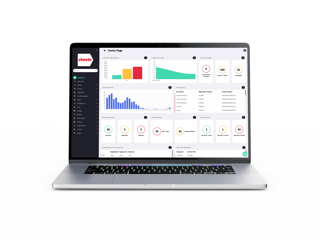What are the steps a fleet manager should go through to get to grips with the grey fleet?
The grey fleet management process is essentially the same as any other:
- Collect information
- Develop policies and practices to control costs and risks
- Implement
- Measure the effect
- Revise if necessary
In many ways, collecting information is the most crucial step of all, because the effectiveness of any solution depends primarily on the extent to which you are able to quantify and qualify the problem.
What information should they collect?
You need to gather as much information as possible about who uses private cars on business; what they drive; what journeys they make; how much they charge the business, and so on.
However, a startlingly large number of businesses don’t even keep a central record of the journeys and mileage costs of their company cars, let alone the grey fleet.
If the information is held, it is often buried in expenses claims scattered across many cost centres. Trying to extract useful information from thousands of forms is unlikely to be the most efficient way to get the data you need.
Nevertheless, almost all the information you need to manage grey fleet travel does exist – in the employees’ heads. The most direct way to access it is to go straight to employees with a questionnaire.
The goal of the survey should be to find out who drives on company business and, if they do, to record key information about them, their vehicle and their work journeys. Alphabet’s Grey Fleet Toolkit includes a survey template that you can adapt to your needs.
At this stage, you want to include as much of the workforce as possible – even if they answer ‘no’ to the question ‘do you ever drive on company business?’ you should collect a signed declaration that they have not driven on business during the previous 12 months and will do so in future only with the express permission of the company.
Setting the questions
Assembling a task force of stakeholders, including HR, finance, company car users and grey fleet drivers, will help you to make sure the survey asks all the right questions.
Try them out on the group to see how drivers interpret them and whether they think they are relevant.
Many businesses already use electronic questionnaire packages for internal survey.
If yours doesn’t, you could sign up to an online survey tool such as Survey Gizmo, which makes it considerably easier to collect answers and analyse the responses than using paper forms. You will find plenty of advice on running and structuring surveys online.
If employees do not routinely have access to the web or your company intranet, temporary kiosks in lunchrooms or work areas will enable them to complete the survey.
Don’t be afraid to ask drivers for information such as CO2 ratings. It’s not that difficult for the driver to find it because it’s on the tax disc of their car unless it is over 10 years old.





















Login to comment
Comments
No comments have been made yet.